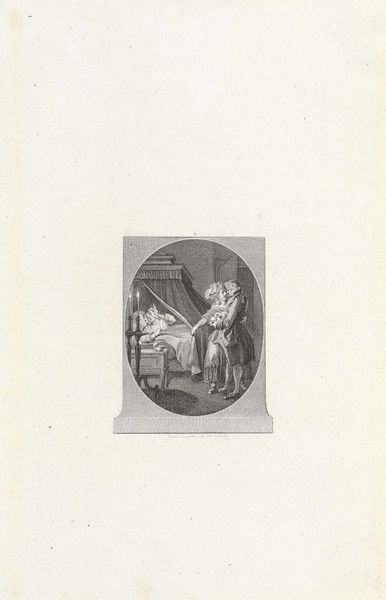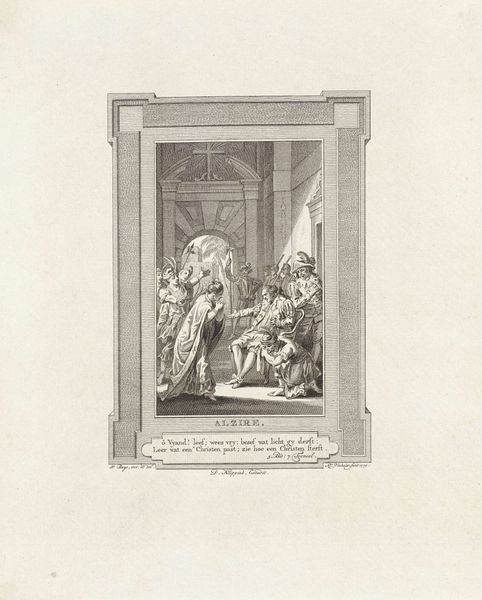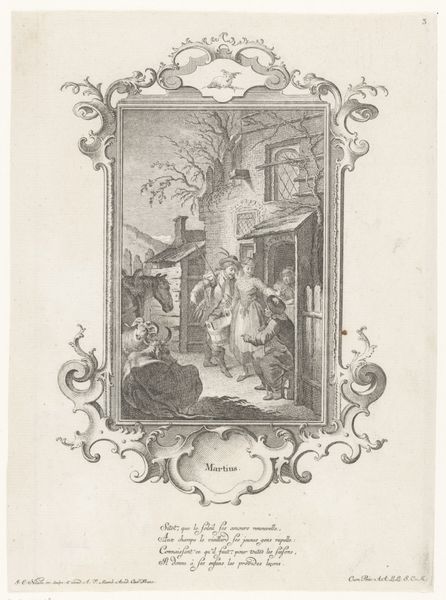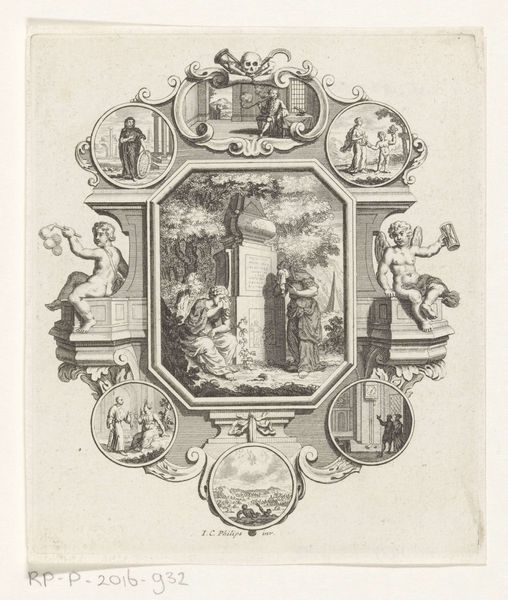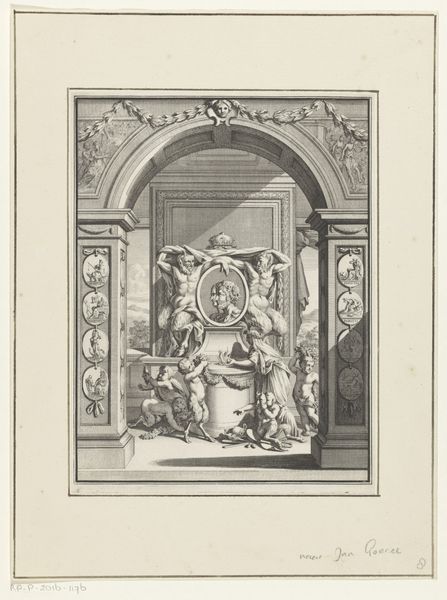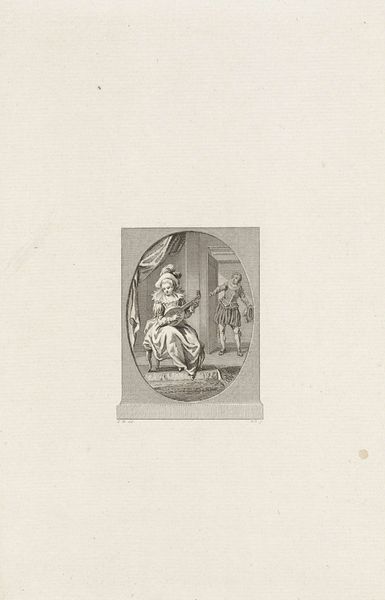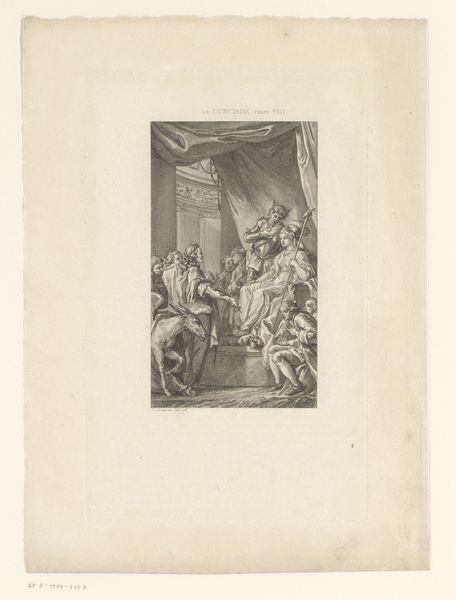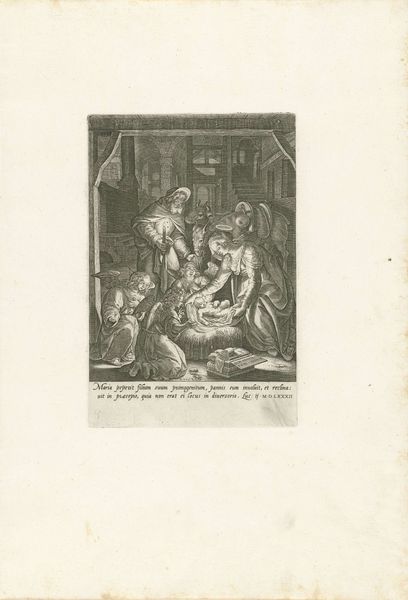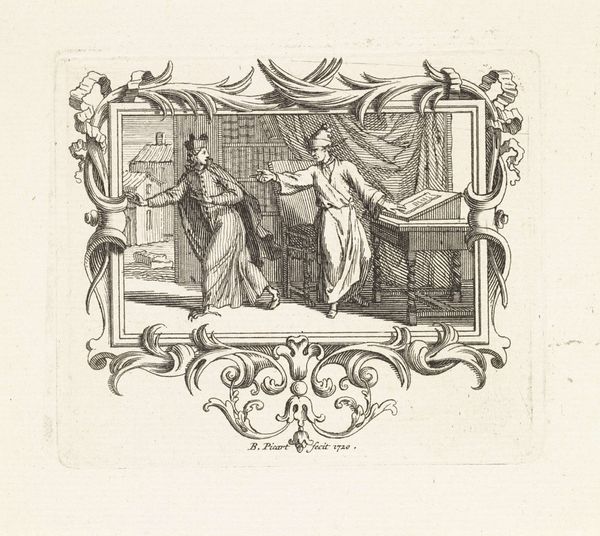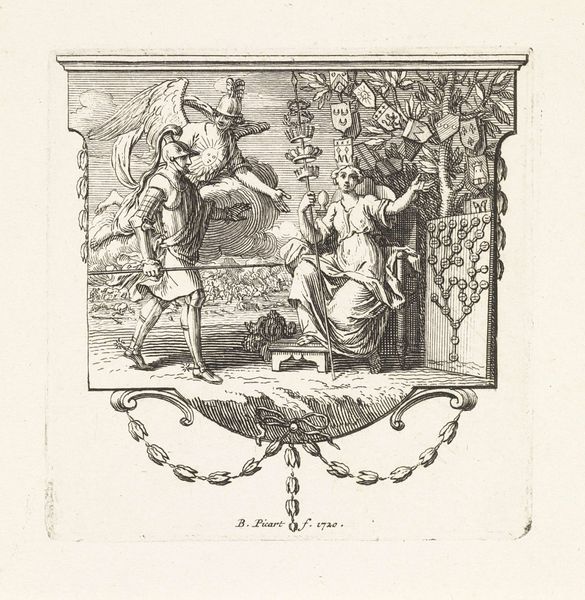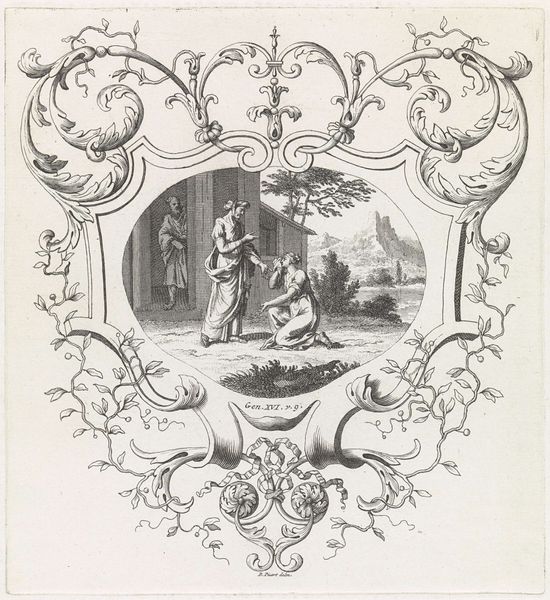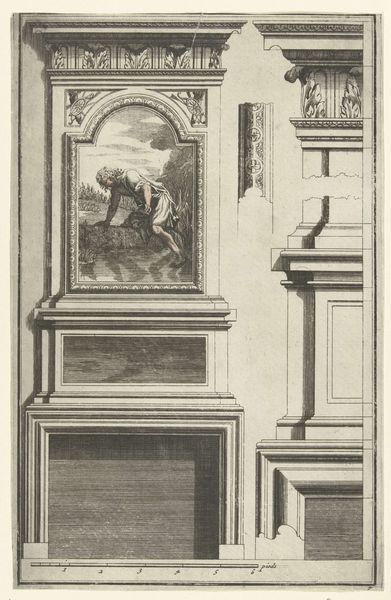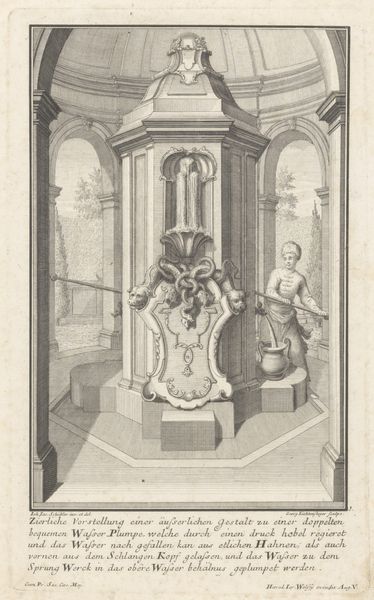
Herman de Ruiter gereed de lont in het kruit te werpen, 1570 1817
0:00
0:00
johanneschristiaanbendorp
Rijksmuseum
print, engraving
#
narrative-art
# print
#
history-painting
#
engraving
Dimensions: height 220 mm, width 146 mm
Copyright: Rijks Museum: Open Domain
Editor: Here we have Johannes Christiaan Bendorp’s engraving from 1817, titled "Herman de Ruiter gereed de lont in het kruit te werpen, 1570," housed in the Rijksmuseum. It’s incredibly detailed, depicting a rather violent historical scene. What do you make of it? Curator: Well, consider the physical act of creating an engraving like this in 1817. The labor involved! Each line meticulously carved into a metal plate, the press used to transfer that image. This wasn't some mass-produced poster; it was a deliberate, crafted object. Think about the accessibility of these prints too. How would an image like this be circulated, and consumed? Editor: It definitely emphasizes the time and effort, considering that each one is manually created, in contrast to our methods of creation today. The theme being historical as well adds an additional element of context, being re-contextualized through a different material process. Curator: Precisely! And this process gives it authority. Does the means of its creation – an etching – affect the story that's being told? How does its medium reinforce or challenge existing power structures? Whose history gets this level of dedicated production, and who’s left out? Is it to serve nationalistic agendas, perhaps? Editor: That’s a fantastic question. I guess I was so focused on the "what" that I didn’t think about the "how" influencing its reception. Considering it is a work about conflict, it certainly does raise interesting questions about material consumption and narrative building. Curator: Exactly. The physical work inherent to its existence allows it to have presence. The materiality gives a history that mirrors the history depicted. That alone encourages one to consider social labor and consumption in art as much as history.
Comments
No comments
Be the first to comment and join the conversation on the ultimate creative platform.
